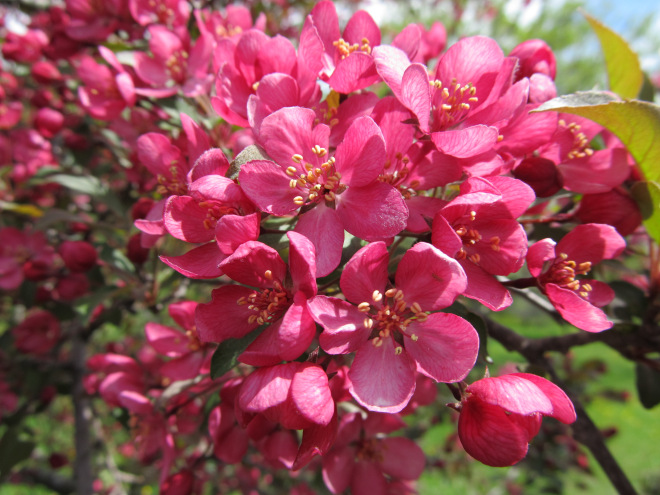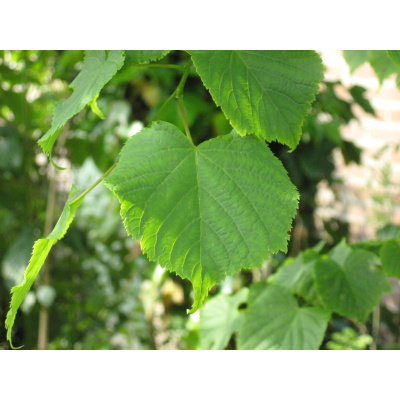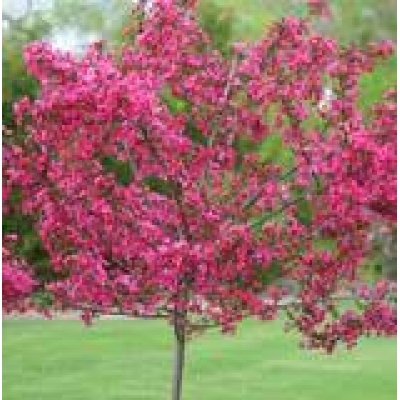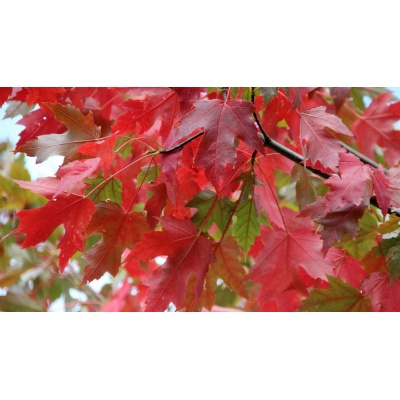Description
 Malus ‘Prairifire’
Malus ‘Prairifire’
Common Name: flowering crabapple | Type: Tree
Family: Rosaceae | Zone: 4 to 8
Height: 15.00 to 20.00 feet | Spread: 15.00 to 20.00 feet
Bloom Time: April to May | Bloom Description: Deep pinkish red
Sun: Full sun | Water: Medium
Maintenance: Low | Suggested Use: Flowering Tree
Flower: Showy, Fragrant | Leaf: Good Fall
Attracts: Birds, Butterflies | Fruit: Showy
Tolerate: Air Pollution
Culture
Best grown in medium moisture, well-drained, acidic loams in full sun. Adapts to a wide range of soils. Established trees have some drought tolerance. Although some flowers may be lost, it is best to prune this tree as needed in late winter. Spring pruning should be avoided as it produces fresh, open cuts where fireblight bacterium can enter.
Noteworthy Characteristics
Malus is a genus of about 35 species of deciduous trees and shrubs from Europe, Asia and North America.
Genus name from Latin is an ancient name for apple.
‘Prairifire’ is a dense, rounded, deciduous tree which typically grows 15-20′ tall with a similar spread. Pinkish-red buds open to slightly fragrant, deep pink-red flowers (1.5″ diameter) in spring. Flowers are followed by masses of small, purplish-red crabapples (to 1/2″ diameter) which mature in the fall. The fruits are persistent and attractive to birds. Ovate leaves emerge purplish in spring, mature to dark green with reddish-tinged leaf veins and petioles in summer, and turn orangish in autumn.
Problems
The main diseases of crabapple are scab, fire blight, rusts, leaf spot and powdery mildew. Potential insect pests are of lesser concern and include tent caterpillars, aphids, Japanese beetles, borers and scale. Spider mites may occur.
‘Prairifire’ reportedly has high disease resistance.




Reviews
There are no reviews yet.